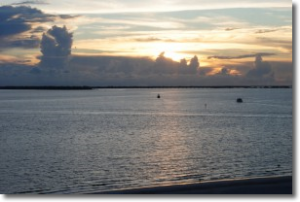Working Waterfronts
Working waterfronts include water‐dependent facilities and related shore‐side infrastructure offering access or support for a wide variety of public, business, recreation, and commercial uses. Challenges facing waterfront users include declining water quality, loss of public access and traditional uses, competing demands, population growth, and threats from climate change. The Alliance will undertake activities to:
- Sustain and enhance robust waterfront cultural traditions, commerce, and uses of public trust; and
- Integrate coastal and land use planning tools to balance new development, historic uses, port expansion, and sustained resources for the future.
- WW1A – Integrate regional long range planning for both commercial and federal ports emphasizing multi-modal, multi-use capacity, and promoting the use of existing infrastructure and navigational channels through increased communication between member states.
- WW2A1(4) – Limit the loss of recreational and commercial waterfronts by encouraging the use of waterway and land-use planning and policy options.
- WW1C/WW2C – Identify and inventory contemporary and historical, recreational working waterfront sites as well as public access infrastructure and support facilities.
WW Snap Shots
WW1C-WW2C Working Waterfronts Inventory WW1A Improved Navigation WW2A4 Community Resources
DRC-WW Water Dependent Uses DRC–WW Clean Resilient Marinas
Prioritized Actions for 2013
- WW2C – Inventory public access infrastructure and support facilities within the four states.
- WW1A – Integrate regional long range planning for both commercial and federal ports emphasizing multi-modal, multi-use capacity.
Prioritized Actions for 2012
- WW2B1 – Protect Military Waterfronts: Develop an inventory/collect information on state-specific military base locations. Coordinate with the SAA Federal Arm. Use SERPPAS as a “backup.”
- WW1C1 – Develop Common Definitions: Each state will collect existing definitions for commercially, recreationally, culturally important, and historic waterfronts and make into a regional inventory.
TECHNICAL TEAM
STATE REPRESENTATIVES
Maureen Meehan – NC Dept. of Environment and Natural Resources
April Turner – SC Sea Grant Consortium
Shawn Jordan – GA Dept. of Natural Resources
Robert Swett (Team Lead) – FL Sea GrantFEDERAL REPRESENTATIVES
Sherri Fields – Dept. of the Interior/U.S. Geological Survey
Margarett McIntosh – U.S. Dept. of Defense/U.S. Army Corps of EngineersADDITIONAL MEMBERS
Amanda Smith – U.S. Dept. of Defense/U.S. Navy
Hope Moorer – GA Ports Authority
Bill Ross – SE Regional Partnership for Planning and Sustainability
Brad Pickel – Atlantic Intracoastal Waterway Association
Suzi DuRant – SC Marine Association

